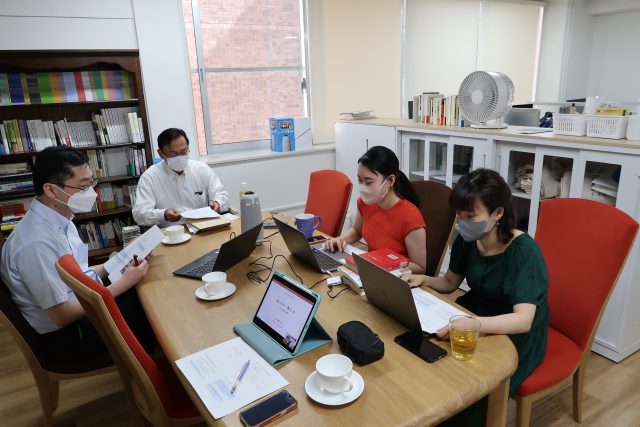On July 28, 2022, the Ushioda Initiative of Arts (UIA) held its third research meeting, in which SAKIHAMA Sana (EAA Project Assistant Professor) and WANG Muyun (EAA Project Researcher) presented their study titled “For Whose Geimon? Literature, Rural Areas, and Development.” The presenters explored humanistic values from a social perspective, seeking a way to understand values instead of “uselessness theory, usefulness theory, and uselessness theory.” Their talk focused on the “New Village Movement” advocated by Japanese writer MUSYANOKOJI Saneatasu (1885–1976) and his colleagues.

First, SAKIHAMA introduced the New Village Movement’s ideological background. Historically, it is not uncommon for writers and thinkers to initiate rural development movements. From the eighteenth to the nineteenth centuries, American utopian socialists developed their practices. In the early twentieth century, various regions of China also witnessed rural construction movements. As part of these events, the New Village Movement, drawing on diverse intellectual resources, left behind a unique trajectory. Among them, Leo Tolstoy’s concept of labor and his pursuit of nonviolent social change had a profound impact. The New Village Movement began in Kijo Village, Miyazaki Prefecture, in 1918. Its founders hoped that in this ideal community, anyone could truly live like a human being. After countless praise and criticisms, the successors of the New Village Movement continue their practice today. WANG briefly explained the changes of the New Village Movement in the past century and introduced its impact on China during the New Culture Movement. On the one hand, the New Village Movement’s pursuit of the concept of combining individualism and humanitarianism has inspired many Chinese revolutionaries, including even MAO Zedong. On the other hand, practices in the movements experienced repeated setbacks and thus have, to some extent, made Chinese revolutionaries turn to scientific socialism.
Meeting participants discussed changes in the relation between literature, rural areas, and development; the internal and external factors that determine the knowledge and experience of development; and the social structure that keeps the village sustainable. Some points also contributed to further discussion. These included the comparison between the New Village Movement and the Japanese “cultural apartments” of the 1920s, the similarities between the New Village community and the monastic community, and the “exit-voice” in the community. The New Village Movement’s century-long journey between ideals and reality has provided us with a reference for considering geimon in the present day.
Japanese Report by WANG Muyun (EAA Project Researcher)








